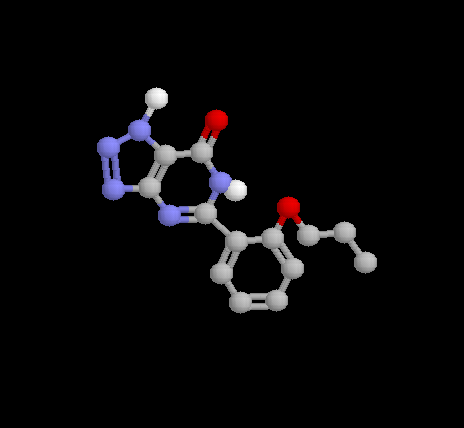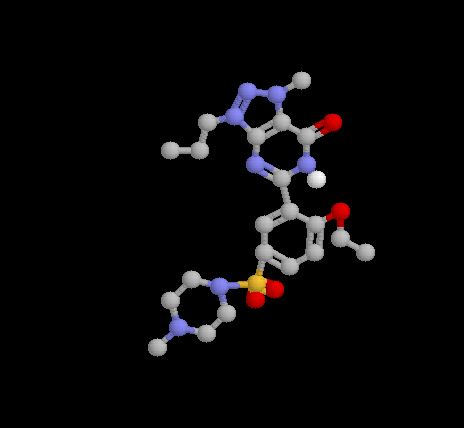
The Discovery of Sildenafil Citrate
The discovery of Viagra as a treatment for erectile dysfunction (ED), is a classic example of serendipity. Originally the research team headed by Simon Campbell and David Roberts, at Pfizer, were looking for compounds with antihypertensive and antianginal properties. Twelve years later their research was to lead to a drug for a completely different condition.
Cyclic guanine monophosphate (cGMP), a cyclic nucleotide, has the properties of a vasodialator, i.e. it relaxes smooth muscle allowing increased blood flow. Phosphodiesterases (PDE) are a class of enzymes, some of which hydrolyse cGMP to GMP, thus appropriate drugs would need to inhibit the active site of the PDE receptor. This was the original task facing the Pfizer team in 1986. At the time few compounds were known to have these properties. One which did was Zaprinast (Fig1) an non-commercialised antiallergy drug.

Fig1.Zaprinast
This compound was known to be a vasodilator in vitro but had other associated pharmacological properties. The lack of selectivity along with the lack of potency limited the potential of Zaprinast, However, this was to be a starting point for the research team. Investigation into other ring systems led to the discovery of more effective compounds such as pyrazolopyrimidinones(Fig2).
Fig.2 Pyrazolopyrimidinone
Substituting a propyl for a methyl group on this later system increased both the potency and the affinity for PDE. Solubility was increased with the addition of a sulphonamide group, this also reduced lipophilicity and led to the compound sildenafil citrate, or Viagra(Fig 3), as it was later to become known.

Fig 3.Sildenafil